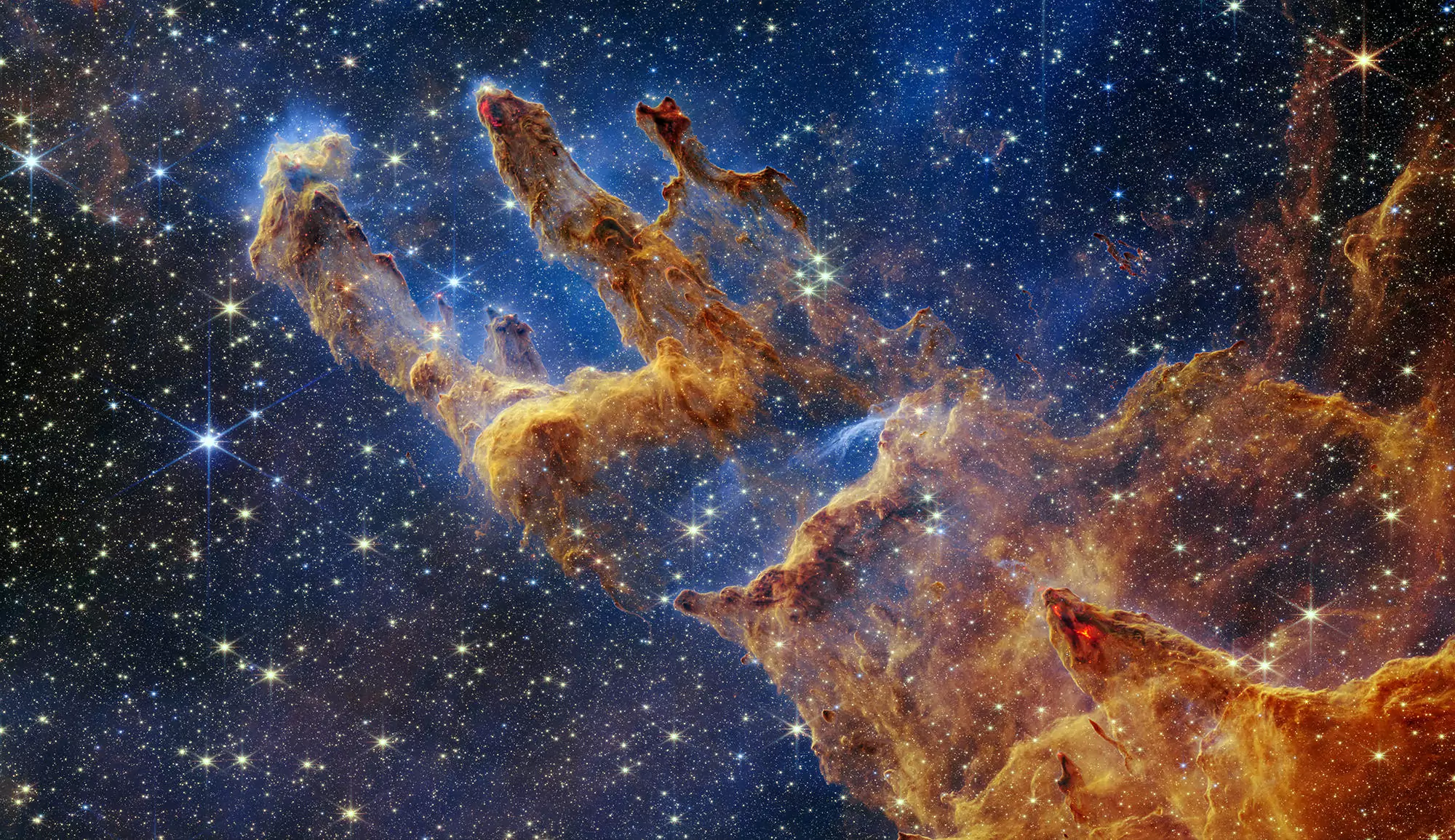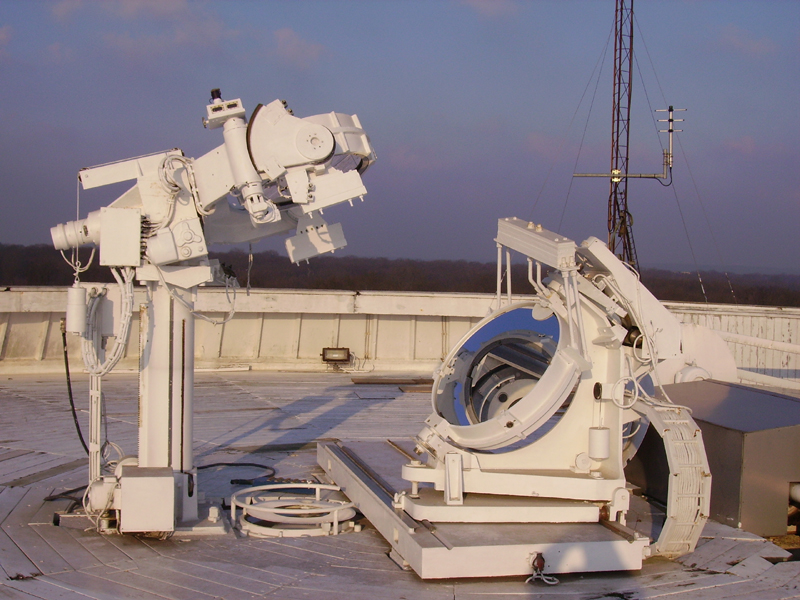High resolution solar instruments are generally installed on the tops of towers; these have to be tens of metres high so that the instruments are above the most turbulent layers of the atmosphere.
Building of the solar tower at the Meudon Observatory began in 1963; it was commissioned in 1969. The 35m high building houses a vertical coudé telescope which has a 60cm mirror with a focal length of 45 m. On the roof, a set of two large flat mirrors, called a cœlostat, sends the light of the Sun towards the primary mirror of the telescope, which is in the lower part of the building. The beam is then "sent back", finally making a 42 cm wide image of the Sun at the focal point of the telescope.
Cœlostat and spectrograph
At this point, a large (14 m long) spectrograph enables the light to be dispersed into a spectrum with a resolution of 300000. For many years, Meudon’s solar tower was a reference for the measurement of the speeds of chromospheric structures, thanks to its subtracting double-pass system, installed in 1973.
The solar tower is still used today for scientific work; however, it is also an outstanding instrument for teaching the methods of solar physics. It is also an excellent platform for developing new instruments, and an ideal telescope for routine observations of solar magnetic activity; these latter are important for space meteorology, whose purpose is to protect us from the effects of solar eruptions.


